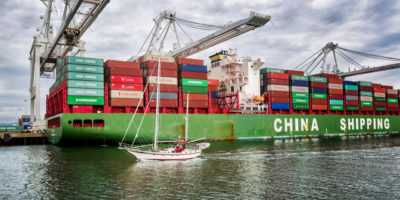-
ÉTATS-UNIS
US Tariffs | Commercial risk management in contracts with international clients and suppliers
14 avril 2025
- Distribution
- Impôts
The most dangerous mistake one can make after the announcement of the (partial) suspension of U.S. duties for 90 days is to hope that everything will go well and we will return to the pre-April 2 world.
First, because very invasive tariffs remain in place: 10 percent on all countries that trade with the U.S., including the EU, 25 percent on automotive, 25 percent on steel and aluminum, 145 percent on China.
Second, because it is impossible to predict the actions of the U.S. Administration in the short and medium term: it cannot be ruled out that tariffs will remain, increase, change targets or that other factors will intervene to turn the tide in international markets, such as an escalation of the trade war with China.
The 90-day suspension is an opportunity
The U.S.’s temporary suspension of tariffs represents a valuable window that should be used not only as a truce but also as a valuable room for action: 90 days to rehash contracts, renegotiate key clauses, and insert levers of flexibility that can protect business in various future scenarios in the U.S. and other markets.
Today’s exporters cannot afford to « sit back and see what will happen »-it is time to act, and to do so professionally and strategically. Let’s look at a checklist of important points to consider.
What do contracts with customers and suppliers entail?
The first point is to survey agreements with the trade network in the U.S. and other countries that export to the U.S., as well as with upstream suppliers in the supply chain.
Is there a written contract? The worst-case scenario – unfortunately a very frequent one – is when the parties cooperate informally, only based on orders and order confirmations. This leaves undefined not only what happens in the case of imposition of duties, but also a whole range of other points, for example, limits on damages that can be claimed in the case of breach of contract, the duration of the agreement, the applicable law, and how any disputes will be resolved.
Another very problematic scenario is one in which contracts exist, but they are generic and do not include the necessary covenants to manage the risks involved in operating in a highly litigious market such as the U.S., which, moreover, has very high legal costs.
Having done this analysis, the necessary actions can be put in place, prioritizing according to the importance of business relationships and as appropriate:
- Negotiate and conclude a written contract from scratch
- Replace the existing agreement with a complete and correct contract
- Amend and integrate the existing agreement with pacts to manage tariffs and other causes of price fluctuations
Let us dwell on the last scenario, assuming that there is a complete and correct contract but one that does not regulate price and cost fluctuation as a direct or indirect consequence of the introduction of duties.
Contract Addendum
In such cases, the correct course of action is to sign an Addendum to the original contract, specifying which covenants are being waived and which covenants are being added. It is essential that the Addendum be negotiated and signed by persons with the power of representation of the parties and that it be drafted with the help of lawyers who specialize in this field. In addition to including correct clauses, it is necessary to verify that the covenants are valid according to the rules of law applicable to the contract.
Here are some clauses that can be the subject of the Addendum, to be modulated according to the specific case and possible scenarios.
Tariff Cost Sharing
By introducing this covenant, it is provided that in the event that duties are confirmed at [x]% or are reduced or increased within certain established thresholds, the Parties will share the increase equally, or according to other established percentages.
There may also be a ceiling on tariffs beyond which a party has the right to withdraw from the contract or request the suspension of certain orders for a specified period of time, after which it has the right to withdraw.
Price Adjustment
With this covenant, a discount or an increase in the product’s price is agreed upon, as the case may be, in the case of a duty greater than [x]%.
Among the use cases, in addition to that of the company exporting to the U.S. or other intermediate markets, with final destination of the products in the U.S., is that of those who purchase a product subject to import duty and resell it, processed or assembled.
Right to Cancel or Postpone Confirmed Orders
This covenant gives the right to revoke or suspend for a certain period already negotiated orders, as such binding, in case of confirmation or introduction of duties above a certain threshold, for example, if 20% taxation was confirmed for the import of wine from the EU.
The clause can be combined with previous covenants, for example, by stipulating that below the specified threshold, the contracts remain valid, and the parties share the duty or have the right to renegotiate the price.
Supply Forecast Adjustment
With this clause the Parties can modify supply programs already agreed for a specific duration (e.g., 24 months), with continuous sales and purchase obligations at a fixed price or indexable only within certain limits. The aim is to agree on the prerequisites for reshaping supply programs in the short and medium term, which can be very useful for defining the rules that will apply to relationships with key suppliers or customers for possible changes in volumes, delivery times, and prices.
Right to Source from Alternative Suppliers
This covenant serves to be authorized, if necessary, to source alternative suppliers of components or raw materials to those previously authorized in the contract with the end customer, for example, in cases where purchasing from the original suppliers has become too costly or difficult due to duties imposed at import or in previous steps in the supply chain, or other events such as currency or price fluctuation of certain commodities beyond a certain level established in the agreement.
Hardship and Force Majeure
The imposition of duties cannot be invoked as a cause of Force Majeure or hardship, respectively, to excuse contract non-performance or to renegotiate the price, even in cases of very high price increases (such as the 145% duty imposed on Chinese products). This conclusion is almost uniform under the law and jurisprudence of the major countries involved in the tariff war: U.S., China, Canada, Mexico, France and Italy: I refer to this practical guide for a timely examination of what the various rules provide.
If the contract lacks a well drafter Force Majeure and Hardship clause, or contains a generic clause, it is important to get your hands on revising it to expressly state the cases in which a party is entitled to suspend or terminate the contract, how and when to communicate the decision to invoke the exemption, and the consequences on the parties’ contractual obligations. You can go deeper on this topic here.
Conclusion
It is essential to prepare for possible future scenarios regarding duties (confirmed, increased, changed, or decreased) and to determine the consequences on trade relations with foreign clients and suppliers: moving today, at a standstill (or nearly so), allows entrepreneurs to negotiate shared and fair solutions and to avoid, as far as possible, the emergence of tensions and conflicts with the various partners along the international supply chain.

























